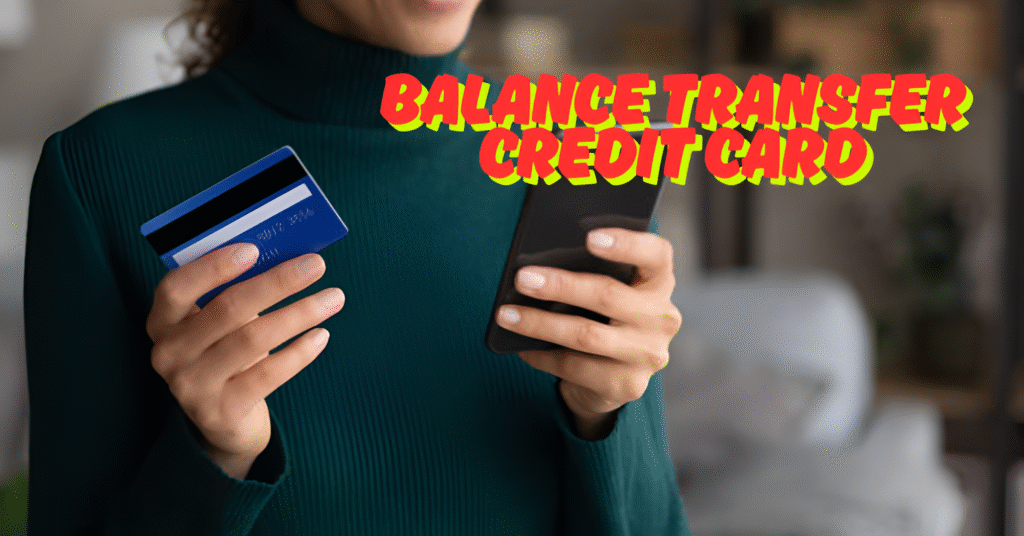Are high-interest credit card bills keeping you up at night? You’re not alone—and you don’t have to stay stuck. A balance transfer credit card can help you hit reset on your finances by giving you time to pay off your debt without interest draining your wallet.
Table of Contents
- What Is a Balance Transfer Credit Card?
- How Does a Balance Transfer Work?
- Why Use a Balance Transfer Credit Card?
- Risks and Mistakes to Avoid
- Who Should Use It?
- How to Choose the Best One
- How It Affects Your Credit Score
- Tips to Maximize It
- Frequently Asked Questions
- Final Thoughts
What Is a Balance Transfer Credit Card?
A balance transfer credit card lets you move existing credit card debt to a new card offering 0% APR for a promotional period (typically 12 to 21 months). This gives you time to pay off the debt without additional interest charges.
📈 Example: Owe $5,000 on a card with 20% APR? Transferring to a 0% APR card could save you over $1,000 in interest.
How Does a Balance Transfer Work?
- Apply for a balance transfer credit card with a 0% APR offer.
- Request the transfer by providing the old account details.
- Wait for the transfer to complete (usually 5–14 days).
- Start paying down the balance interest-free during the promo period.
⚠️ After the 0% APR period ends, regular APR (often 18%+) applies.
Why Use a Balance Transfer Credit Card?
- 💸 Save on interest
- 🔢 Consolidate debt into one manageable payment
- ⏳ Pay off debt faster
- 😓 Lower stress and regain control
Risks and Mistakes to Avoid
- Balance transfer fees: Usually 3% to 5% of the amount.
- Short promotional periods: Know when the 0% APR ends.
- Interest on new purchases: Unless also under 0% APR.
- Missed payments: Can cancel your 0% offer.
✅ Tip: Set up autopay to never miss a payment.
Who Should Use It?
Best for:
- People with good to excellent credit (670+)
- Those committed to paying off debt in 12–18 months
- Anyone currently paying high interest
- Budget-conscious individuals with a realistic plan
Avoid if you:
- Have poor credit
- Continue to accumulate new debt
- Can’t pay off the balance before the promo ends
How to Choose the Best One
| Feature | Look For |
|---|---|
| Intro APR | 0% for at least 12–18 months |
| Transfer Fee | 0% to 3% preferred |
| Regular APR | As low as possible |
| Annual Fee | $0 is ideal |
| Credit Requirement | Good credit or better |
✨ Compare top cards on sites like NerdWallet or Bankrate.
How It Affects Your Credit Score
Positive:
- Lowers your credit utilization ratio
- Builds a history of on-time payments
Negative (Short-term):
- Temporary dip from hard inquiry
- Reduces average account age
✅ Keep old accounts open to soften credit score impact.
Tips to Maximize It
- 💳 Don’t use the card for purchases
- 📋 Create a payoff plan based on the 0% term
- ⏰ Set up autopay for on-time payments
- 📊 Track progress using a spreadsheet or app
Remember, a balance transfer credit card is a tool to eliminate debt, not move it around endlessly.
Final Thoughts
If you use it wisely, a balance transfer credit card can be a turning point in your financial journey. It gives you the breathing room to eliminate credit card debt without interest, slowing you down.
✅ Use it if: You have a solid payoff plan and qualify for a good card.
❌ Skip it if: You’re still accumulating debt or can’t repay within the promo period.
Frequently Asked Questions
Q: Will applying for a balance transfer credit card hurt my credit score?
A: It may cause a small temporary dip due to a hard inquiry, but responsible use can improve your score over time.
Q: Can I transfer a balance between cards from the same bank?
A: Generally, no. Most issuers don’t allow internal balance transfers.
Q: What happens if I don’t pay off the balance before the promo period ends?
A: Any remaining balance will begin accruing interest at the standard variable APR.

Owner of Paisewaise
I’m a friendly finance expert who helps people manage money wisely. I explain budgeting, earning, and investing in a clear, easy-to-understand way.

